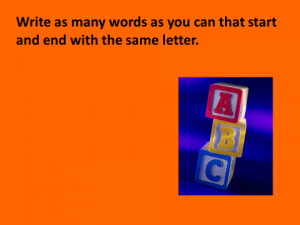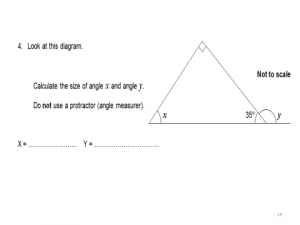Tuesday 23rd June – Year 6
Warm up:

Reading:
Spend some time reading a book of your choice (don’t forget to add it to your Summer Reading Challenge). When you have finished, complete this book review:
Maths:
Warm up:

What can you remember from yesterday’s lesson?
Can you remember the rule?
‘Along the corridor and up the stairs’
Complete the investigation below. If you don’t have square paper, draw yourself some.
Quiz:
Have a go at the quiz from the link below:
https://www.youtube.com/watch?v=zpootegXNrY&list=PLvKtHtvrS4LO3a0igHMPnD9W2u9bo8Lxd&index=4
How did you do? What score did you get?
Geography:
What do you know about Europe?
Work your way through this PowerPoint. At times, it will ask you to complete tasks. The sheet you need is below. If you can’t print it off why not try to draw your own map?
Introduction to Europe PowerPoint
Now complete this task looking at European flags.
Use this to help you:
Science experiment:
Only complete this task if you have the equipment and your parents say it is okay!
The experiment will be looking at how different things react with water. You will have questions to answer as you complete the experiment so read through the whole thing before you start.
You will need:
- 1 clean, plastic soda bottle with cap*
- Vegetable oil
- 1 Alka-Seltzer tablet for a 16 oz soda bottle or 2 tablets for per liter bottle
- Food coloring
- Water
Your experiment steps:
- Gather materials over a surface that cannot be damaged by oil or can be wiped clean. Another good option is to cover a table with old newspapers.
- Fill the plastic bottle ¾ full with vegetable oil.
- Add water to the neck of the bottle, leaving a little space between the water line and the top of the container. (You can always add more water at a later time.)
- Decide on a colour for your ‘lava lamp’ bottle. Select the food colouring accordingly.
- Add 10 or more drops of food colouring to the bottle until a rich colour is seen.
- Break the Alka-Seltzer tablet into smaller pieces (6 to 8). Add one piece at a time observing each reaction.
- When the bubbling stops replace the bottle cap.
- Tip the bottle back and forth and observe the reaction. Tip, twist, and shake the bottle in different directions. Observe the reactions and take notes
Questions to answer:
1) What happens when you add water to the plastic bottle? Why do you think this occurs?
2) What happens when you add the food colouring to the bottle? Why do you think this occurs?
3) What happens when you add the Alka-Seltzer to the bottle? Why do you think this occurs?
4) What experiments did you perform on the closed soda bottle (twisting, shaking, etc.)? What did you notice during each trial?
Other tasks you could do today:
- Go to https://www.bbc.co.uk/iplayer/group/p08b0ct7 and watch a Shakespeare play for free.
- Go to Saints TV on YouTube and watch an old Saints game.
- Complete some activities on your NPAT Reading Bingo challenge
- Go on a virtual tour of Buckingham Palace and learn about royal history at https://www.royal.uk/virtual-tours-buckingham-palace
- Complete some science experiments at http://www.sciencefun.org/kidszone/experiments/
- Go on a virtual tour of Ancient Mayan ruins at http://sunfunnelmedia.com/pano/xunantunich/Xunantunich-belize-mayan-ruin-pyramid-virtual-tour.html
- Make a time capsule about your time in lockdown that you can look back on in years to come and share with your children or grandchildren. https://kidsofthewild.co.uk/2020/03/29/make-a-time-capsule-coronavirus-covid-19-kids/ here are some ideas to help you out.
- Create a garden scavenger hunt that all of your family can take part in. It could be as simple as find a stick, find a red insect or you could create clues that they have to follow to find the ‘treasure’.
